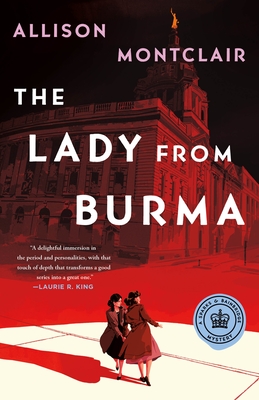 The Lady from Burma (Sparks & Bainbridge, #5) by Allison Montclair
The Lady from Burma (Sparks & Bainbridge, #5) by Allison Montclair Format: eARC
Source: supplied by publisher via Edelweiss
Formats available: hardcover, ebook, audiobook
Genres: historical fiction, historical mystery
Series: Sparks & Bainbridge #5
Pages: 336
Published by Minotaur Books on July 25, 2023
Purchasing Info: Author's Website, Publisher's Website, Amazon, Barnes & Noble, Kobo, Bookshop.org, Better World Books
Goodreads
In Allison Montclair's The Lady from Burma, murder once again stalks the proprietors of The Right Sort Marriage Bureau in the surprisingly dangerous landscape of post-World War II London…
In the immediate post-war days of London, two unlikely partners have undertaken an even more unlikely, if necessary, business venture - The Right Sort Marriage Bureau. The two partners are Miss Iris Sparks, a woman with a dangerous - and never discussed - past in British intelligence and Mrs. Gwendolyn Bainbridge, a war widow with a young son entangled in a complicated aristocratic family. Mostly their clients are people trying to start (or restart) their lives in this much-changed world, but their new client is something different. A happily married woman has come to them to find a new wife for her husband. Dying of cancer, she wants the two to make sure her entomologist, academic husband finds someone new once she passes.
Shortly thereafter, she's found dead in Epping Forest, in what appears to be a suicide. But that doesn't make sense to either Sparks or Bainbridge. At the same time, Bainbridge is attempting to regain legal control of her life, opposed by the conservator who has been managing her assets - perhaps not always in her best interest. When that conservator is found dead, Bainbridge herself is one of the prime suspects. Attempting to make sense of two deaths at once, to protect themselves and their clients, the redoubtable owners of the Right Sort Marriage Bureau are once again on the case.
My Review:
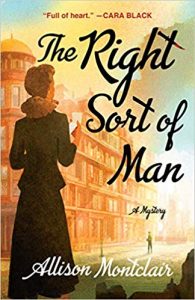 The course of true love never does run smooth, and the business of finding it even less so, especially when Sparks & Bainbridge mix the business of romance with the business of murder.
The course of true love never does run smooth, and the business of finding it even less so, especially when Sparks & Bainbridge mix the business of romance with the business of murder.
They also say that money is the root of all evil, and that every woman needs roots. Gwen Bainbridge has money – she’s just not permitted to spend it or control it or act independently about it or pretty much anything else without the permission of the legal minder assigned to her by the Court of Lunacy. An assignment that Gwen and her psychiatrist believe that she is ready to shuck off two years after her official diagnosis.
Gwen attempted suicide upon learning of the death of her husband at Monte Cassino during the late war. So her wealthy father-in-law had her committed and her rights stripped away, resigning her to the treatments of the day which were barbaric in the extreme both medically and legally.
One of the overarching plots in this series has been about Gwen’s quest to regain her independence as well as custody of her son, and get both of them out from under the various thumbs they are forced to endure.
Her in-laws at least meant well, even if their methods for going about it were terrible. The motives of the man in charge of her fate, her ‘Committee’ in the legal parlance of the day, turn out to be even more terrible than she originally believed.
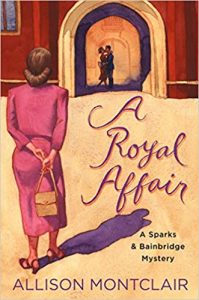 But Gwen is intimately acquainted with the circumstances that might drive someone to suicide, so, when a client presents themselves at the Right Sort Marriage Bureau, intending to contract for a search for her soon-to-be-widower, Gwen is suspicious that Adele Remagen is planning to take her own life before cancer takes it for her.
But Gwen is intimately acquainted with the circumstances that might drive someone to suicide, so, when a client presents themselves at the Right Sort Marriage Bureau, intending to contract for a search for her soon-to-be-widower, Gwen is suspicious that Adele Remagen is planning to take her own life before cancer takes it for her.
And Gwen is having none of it. To the point where she refuses to take the rather unusual contract unless Mrs. Remagen promises not to end her life prematurely. A promise the dying woman gives.
So it’s a surprise to learn that Adele Remagen seems to have committed suicide after all. Unless the suspicions of the young constable who found her body are to be taken into more account than his supervisor is willing to allow.
Which of course, both Sparks & Bainbridge certainly are. That Mrs. Remagen’s death is going to tie itself neatly if not tidily into Gwen’s pursuit of her independence is not something that either Sparks or Bainbridge see anywhere on the horizon, but it is looming there all the same.
The question is whether Gwen can get out from under everything else that is looming over her before it’s too late.
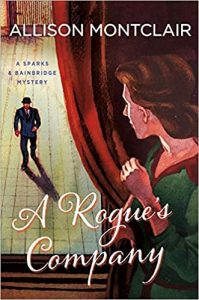 Escape Rating A: The Lady from Burma is a story about closings and openings. Mrs. Adele Remagen’s life is closing, and the top item on her ‘to-do’ list before she dies is to make sure that her beloved husband opens himself back up to the world after she’s gone.
Escape Rating A: The Lady from Burma is a story about closings and openings. Mrs. Adele Remagen’s life is closing, and the top item on her ‘to-do’ list before she dies is to make sure that her beloved husband opens himself back up to the world after she’s gone.
Gwen Bainbridge hopes that her life is opening back up. She has high hopes that her petition for independence from the Court of Lunacy will be granted and that her life will become her own, in many ways for the very first time. And it’s only on the cusp of that longed-for change that she realizes that she never really closed out the last chapter of her life and that she needs to do that before she can start again, as the person she is now.
Iris Sparks is looking at both sides of the equation. Acknowledging that she has opened her heart to gangster Archie Spelling, and that being part of some level of commitment to a relationship doesn’t have to mean the loss of her hard-won independence.
In the midst of all their personal issues, Sparks & Bainbridge have learned that they are meeting on a common platform that neither expected when the series opened. Iris Sparks has always been a bit of an adrenaline junkie, as evidenced by her secret work during WW2. But Gwen Bainbridge, who has always played it safe, has come out of her experience with a yen to experience all that life has to offer – including the dangerous and deadly parts. She’s gotten just as addicted as Sparks to the rush of throwing herself into danger and solving the case – even if she’s still struggling a bit with admitting that to herself.
Because this case has brought out both the best and the worst of her, as she has to fight her corner for her freedom, and prove to the men who want to control her that she is both utterly sane and totally committed to standing on her own two feet and defying them when they try to contain her. A combination of positions that threatens to put her right back in the sanatorium – not because she’s wrong but because she’s right.
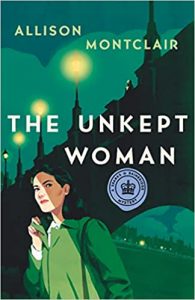 And in the middle of their personal sturm und drang, of which there is plenty on all sides, there’s the search for justice for Adele Remagen, and the grief of love lost that may never be found again.
And in the middle of their personal sturm und drang, of which there is plenty on all sides, there’s the search for justice for Adele Remagen, and the grief of love lost that may never be found again.
Sparks & Bainbridge are fascinating protagonists. They come from such opposite backgrounds, have such different responses to both their work AND the murder-y messes they find themselves in, and yet have found a path to sisterhood that surprises, delights and supports them both. I found a reading ‘partnership’, so to speak, with them in their first outing, The Right Sort of Man, and I enjoy both following their journey AND watching them make matches as they solve murders. The Lady from Burma was another captivating read about this intrepid duo, so I’m already looking forward to their next adventure!

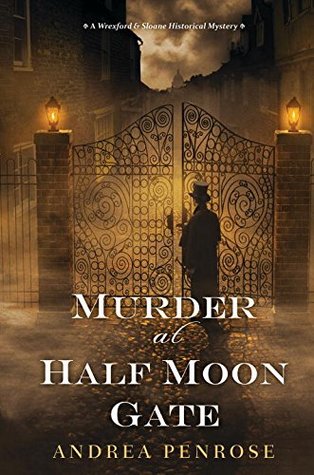 Murder at Half Moon Gate (A Wrexford & Sloane Mystery) by
Murder at Half Moon Gate (A Wrexford & Sloane Mystery) by  Escape Rating A-: I picked this up, so soon after finishing
Escape Rating A-: I picked this up, so soon after finishing  At the same time, this series has also brought other historical mysteries to mind, especially
At the same time, this series has also brought other historical mysteries to mind, especially 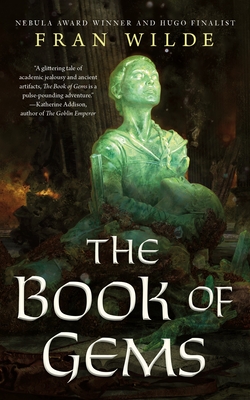 The Book of Gems (Gemworld, #3) by
The Book of Gems (Gemworld, #3) by 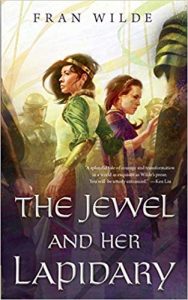 The Book of Gems is the third book in the
The Book of Gems is the third book in the 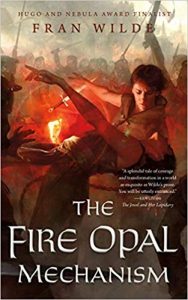 Escape Rating A-: I originally picked up
Escape Rating A-: I originally picked up  Women of the Post by
Women of the Post by 
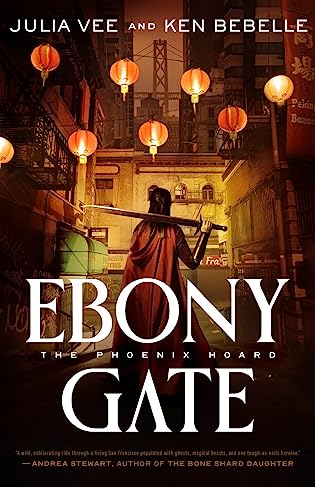 Ebony Gate (Phoenix Hoard, #1) by
Ebony Gate (Phoenix Hoard, #1) by  (There are also touches (or more) of
(There are also touches (or more) of  That being said, I want to give a big shoutout to the narrator, Natalie Naudus, who also narrated Max Gladstone’s
That being said, I want to give a big shoutout to the narrator, Natalie Naudus, who also narrated Max Gladstone’s 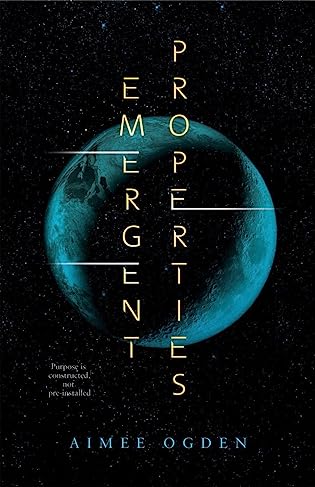 Emergent Properties by
Emergent Properties by 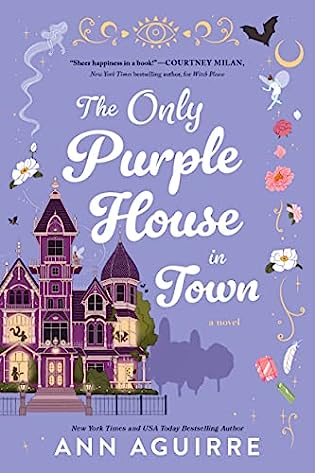 The Only Purple House in Town by
The Only Purple House in Town by 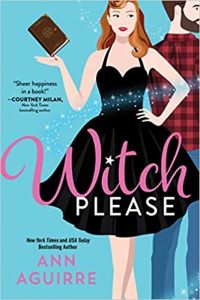 Iris Collins is at the end of her rope – and the knot she’s tied in that rope seems to be slipping through her fingers. And just at the point where all of her choices seem to range from bad to worse the universe throws her a lifeline. Ironic that, as the lifeline is the direct result of a death in her family. Her Great-Aunt Gertie has died and left her a charming but slightly dilapidated house in witch-friendly St. Claire, Illinois. All Iris has to do is get herself there, sign some papers, and she’ll have a rent-free place to live and a fresh start in a life that could seriously use one.
Iris Collins is at the end of her rope – and the knot she’s tied in that rope seems to be slipping through her fingers. And just at the point where all of her choices seem to range from bad to worse the universe throws her a lifeline. Ironic that, as the lifeline is the direct result of a death in her family. Her Great-Aunt Gertie has died and left her a charming but slightly dilapidated house in witch-friendly St. Claire, Illinois. All Iris has to do is get herself there, sign some papers, and she’ll have a rent-free place to live and a fresh start in a life that could seriously use one. Because there’s a wicked witch (even if she isn’t REALLY a witch) trying to run them out of town with an attack of flying monkeys (in the person of government bureaucracy and officialdom) who doesn’t want paranormal creatures in her perfectly normal little town.
Because there’s a wicked witch (even if she isn’t REALLY a witch) trying to run them out of town with an attack of flying monkeys (in the person of government bureaucracy and officialdom) who doesn’t want paranormal creatures in her perfectly normal little town. The story has a lot of the same cozy fantasy vibes – just with a paranormal twist – as Travis Baldree’s marvelous
The story has a lot of the same cozy fantasy vibes – just with a paranormal twist – as Travis Baldree’s marvelous  Days at the Morisaki Bookshop by
Days at the Morisaki Bookshop by  Escape Rating A-: This is simply a lovely story. It’s a bit of a combination of
Escape Rating A-: This is simply a lovely story. It’s a bit of a combination of  The Wayward Prince (The Daughter of Sherlock Holmes Mysteries, #7) by
The Wayward Prince (The Daughter of Sherlock Holmes Mysteries, #7) by  Escape Rating A-:
Escape Rating A-: 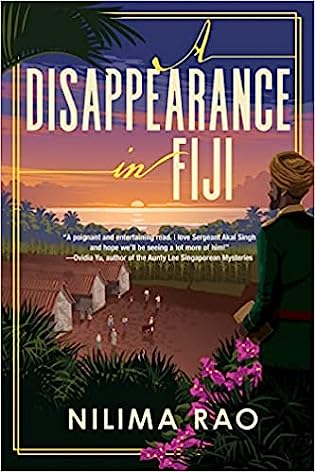 A Disappearance in Fiji by
A Disappearance in Fiji by